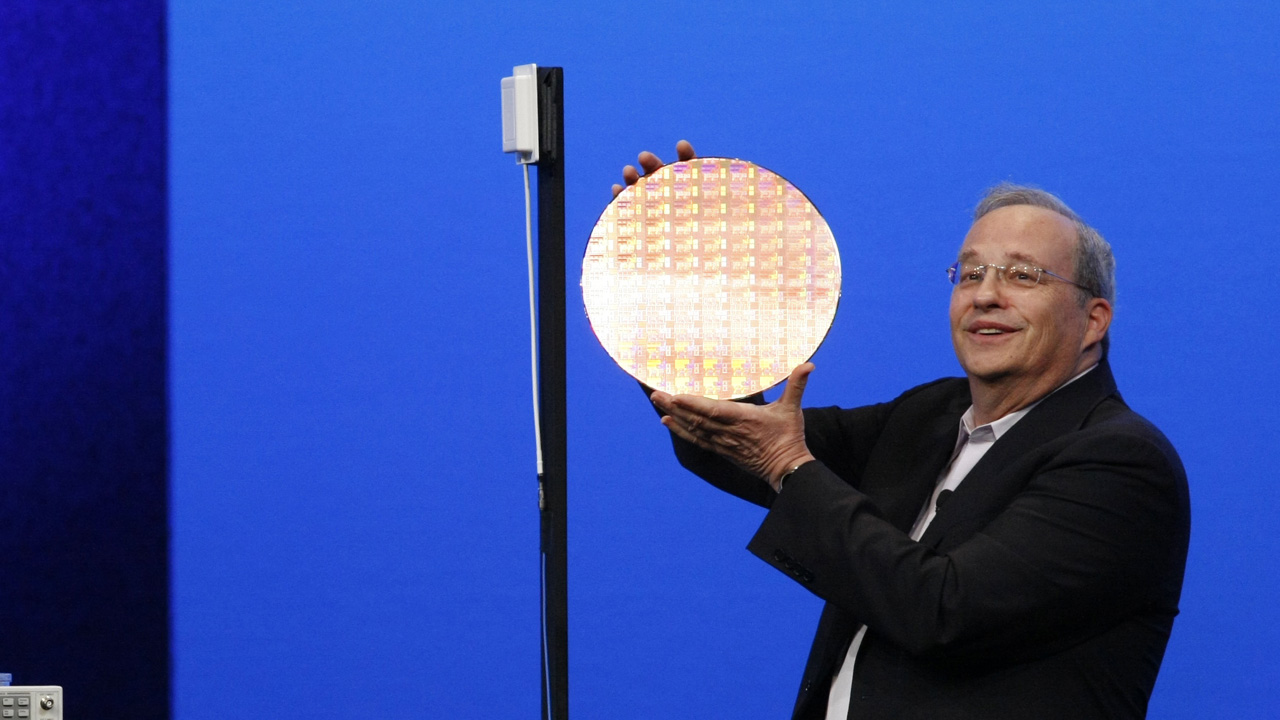The invention of DRAM (Dynamic Random Access Memory) in 1967, by Robert Dennard at IBM, made it possible to fabricate single-transistor memory cells. The invention of the excimer laser at the Lebedev Physical Institute in 1970, and the subsequent invention of deep UV excimer laser photolithography by Kanti Jain at IBM in the early 80s, ultimately led to the smallest components in integrated circuits to shrink from 800 nanometers in 1990 to a low of 22 nanometers in 2012.
The invention of flash memory, also in the early 80s, by Fujio Masuoka at Toshiba opened the doors for high-capacity, low-cost memory. And manufacturing costs for chips were driven down thanks to developments in CMP (chemical mechanical planarisation) by IBM and Motorola throughout the 90s. CMP smoothes the surface of chips making them easier and cheaper to manufacture.
More recently, various announcements have made the future or Moore's Law – which Moore himself reckons has a limited shelf life – look pretty secure. Researchers at the Tyndall National Institute in Ireland announced that they had fabricated the junctionless transistor in 2010; researchers at the University of Pittsburgh announced the development of the single-electron transistor, 1.5 nanometres in diameter in 2011; and in 2012 a team at the University of New South Wales announced the development of a transistor comprising a single atom placed in a silicon crystal.

Will it last?
How long can Moore's Law go on for? As mentioned above, Moore reckons there'll be an end to it. "It can't continue forever," he told TechWorld.com in 2010. Moore says it'll be "two or three generations" before transistors are the size of atoms and that we'll reach a "fundamental limit" with existing processes before 2030.
Also in 2010, the International Technology Roadmap for Semiconductors predicted that transistor-per-chip growth would slow by 2014, projecting that the Moore's Law doubling would shift from every two years to every three. Of course, the growth of nanotechnology could restore Moore's Law to its doubling-every-two-year predictor.
However it might be sustained, as it did before, Moore's Law will have to evolve to survive. As we've seen, developments in semiconductor technology will continue to occur, but this won't necessarily mean that costs will continue to fall – Moore's original economies.
Other measures of the Law will have to come into play, meaning that it will morph into what some in the semiconductor industry call "more than Moore" and 'Gentleman Scientist' Chris Mack calls Moore's Law 3.0. Mack cites the cell phone camera as an example of 3.0 in action. These cameras incorporate image sensors directly onto digital signal processors using large vertical lines of copper wiring called through-silicon vias, so uniting non-logic functions that would previously have been kept separate from the chips themselves.
Sign up to the TechRadar Pro newsletter to get all the top news, opinion, features and guidance your business needs to succeed!
Assuming Moore's Law continues to have an impact on technology, what might the future look like? However you want it to look, basically, especially if nanotechnology becomes more influential. Cyber body parts, brain implants, wearable tech that interacts with your body biologically – our lives are set to change again and again thanks to Moore's Law as we keep living in what feels like the future. And as Moore's Law evolves to keep up with the technological evolution, there are no limits to where the semiconductor will take us. Here's to the next 50 years.